This EHF Fellow is tapping into New Zealand’s natural phosphate sources
There is a common narrative across the farming community that New Zealand landscapes have no naturally occurring phosphate, and therefore we need to import it on a massive scale. The story that is closer to the truth is that many of our stocks of natural phosphate, in addition to previously applied superphosphate, are not available to us anymore due to the way that we manage the land.
Kay Baxter is in the business of fixing the depleted phosphate cycle by regenerating the land naturally and reconnecting to sources that ecosystems in NZ have thrived on for generations.
When Kay and her partner Bob Corker moved to a run down sheep farm on 50ha near Wairoa ten years ago, there were few trees, and the grass was about an inch long, with roots of roughly the same length languishing in poor quality sandy soils. The Brix score for the grass – a measure of sugar content and nutrient density – landed at 2. The widely accepted score for healthy grass is 12.
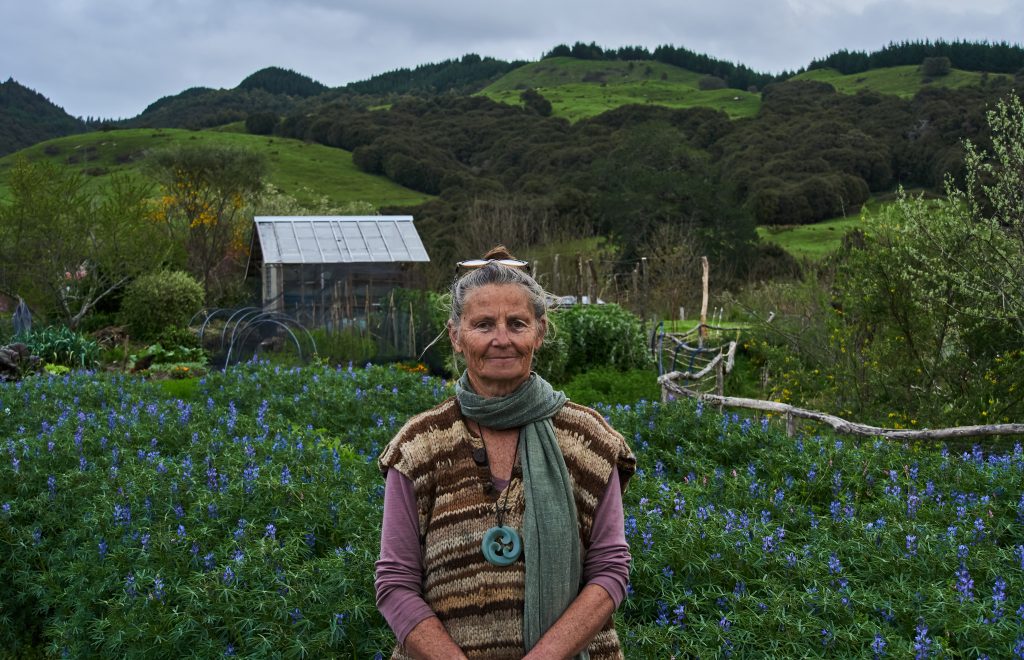
Photo: Kay in her spring garden – by Vitor Crispim (Regeneration Productions)
The Wairoa property is also home to the Koanga Institute, a regenerative living and land use research and education centre, dedicated to the protection, conservation and development of NZ’s heritage food plants. The Institute holds NZ’s largest collection of heritage vegetable seeds. It is also home to ReGeneration Productions, an online education platform.
Over the past decade Kay and Bob, together with the Koanga Institute and other families, have transformed parts of the property into biodiverse, thriving food and seed production gardens. Through a combination of added clay, biochar, seaweed, bone char, eggshell ash, oats and lupins grown as winter compost crops, and composted leaves and corn husks from their chicken yard, they have developed a compost mix that retains high levels of carbon, while accessing alternative sources of the minerals needed to continue to raise the quality of the soil.
“We have raised the soil humus levels in our gardens from 4% to 20-30%, and the Brix scores between 12 and 27 depending on the particular garden and crop, which is virtually unheard of in conventional horticulture.”
Both Fellows in the Edmund Hillary Fellowship, Kay and Bob have a combined 70 years of organic farming experience between them, but over time realised it didn’t go far enough. In recent years they have adjusted their focus from just organic inputs and processes, to making sure that all their activities are inherently regenerative of the land and the surrounding ecosystem. They put in place a regenerative land use plan grounded in the principles of regenerative agriculture (regen ag)Definitions and Principles of Regenerative Agriculture:
1.The Original Principles of Regenerative Agriculture (Rodale Institute)
2.Definition of Regenerative Agriculture (Terra Genesis International)
3.What is Regenerative Agriculture? (The Carbon Underground), and applied some organic fertilisers with the help of Grant Paton’s company Environmental Fertilisers. They began creating gardens and forest gardens and also changed the way they managed their stock.
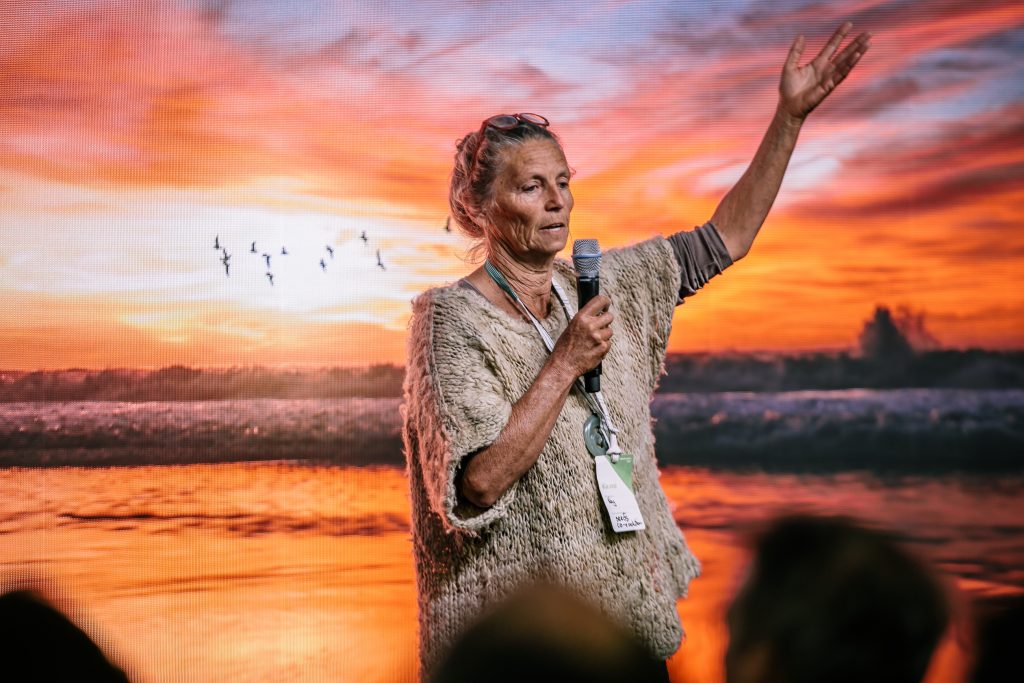
Photo: Kay Baxter speaking in the New Frontiers summit
“You can be organic and still destroy your soil.
I did it, and it took a lot of learning to realise that organic practices
need to be combined with regenerative methods.”
Kay’s ultimate goal, however, is to get to the point where all their fertiliser needs in the annual gardens, forest gardens and the farm, are met and produced within the footprint of their property. Available phosphate is the critical element that catalyses the process of photosynthesis and so determines the Brix scores of the food grown, so they have started looking into natural alternatives to imported phosphate.
Part of their solution, in both the gardens and the remainder of the farm is to adopt silvopasture practice. They have planted deciduous, annual growth trees such as smaller cultivar willows, alders, and kawa poplars, which have roots that reach down into the nutrient-rich alluvial soil zones where there are often abundant natural sources of phosphate and other minerals.
[aesop_video src=”vimeo” id=”413351165″ align=”center” caption=”Video: Koanga Institute property captured by Vitor Crispim (ReGeneration Productions)” disable_for_mobile=”on” loop=”on” controls=”on” mute=”on” autoplay=”on” viewstart=”on” viewend=”on” show_subtitles=”off” revealfx=”off” overlay_revealfx=”off”]“Trees are the Earth’s mineral cyclers.
They cycle nutrients from deep in the soil to the surface
via their root system, and dump them back into the topsoil
through the shedding of bark, leaves and branches.”
From these trees, Kay has been harvesting ramial wood, and chipping it to produce ramial wood chip, a complete balanced fertiliser that is produced from chipping leaves, bark and branches that measure up to 7cm in diameter – essentially the small to medium bits of trees that can be harvested without killing the tree. Turned into the top 5cm of garden beds in Autumn or applied on the ground in the forest garden, the chips feed the fungal and microbe communities in the soil, unlocking a complete range of balanced nutrients required for high Brix growth. This process has shown phenomenal results after just 12 months, with recent soils tests indicating the humus levels in the garden beds had raised by 10%, and all required minerals present in a balanced way with no other fertiliser or compost.
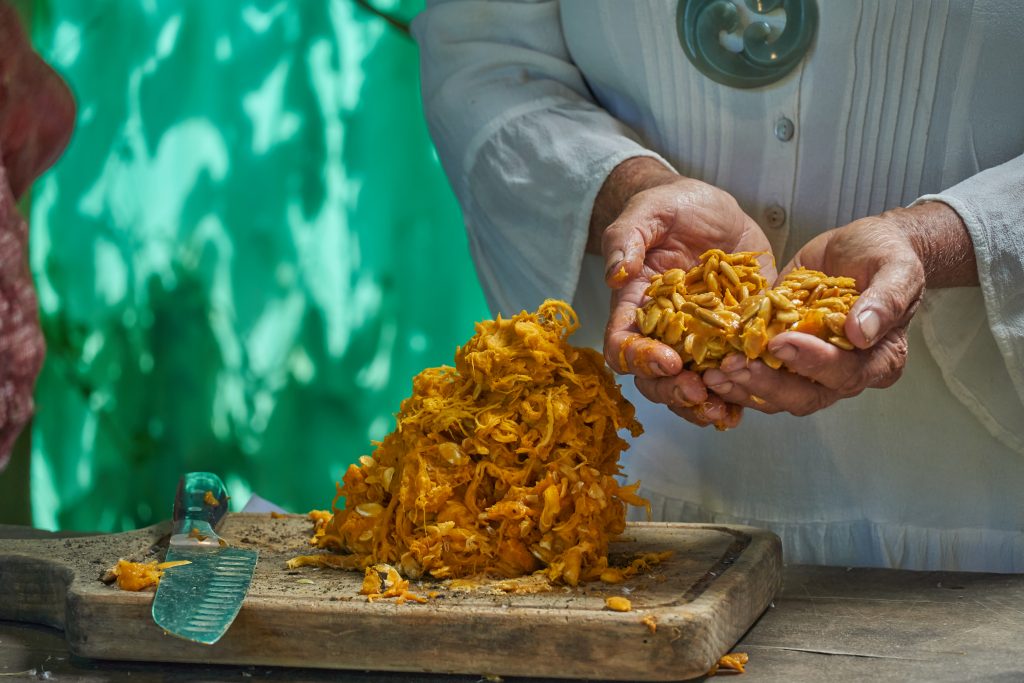
Photo: Heritage pumpkin seeds by Vitor Crispim (Regeneration Productions)
Meanwhile, Bob has been conducting research into how phosphate cycles from the ocean floors to the land. In a wholly natural ecosystem, it is the fish, animals, insects and birds in diverse well-connected and integrated ecologies that ensure the phosphate is spread around. Whales consume phosphate from the bottom of the sea and bring it to the surface as they defecate. Sea birds then feed on the deposits returning them to land along the coastlines.
The improved ecological functioning of the soil on Kay and Bob’s property has provided the right conditions for flourishing insect life, which in turn improves the biodiversity of bird populations. By bringing the trees and birds back to the farm, they are beginning to close the loop on the disrupted phosphate cycle.
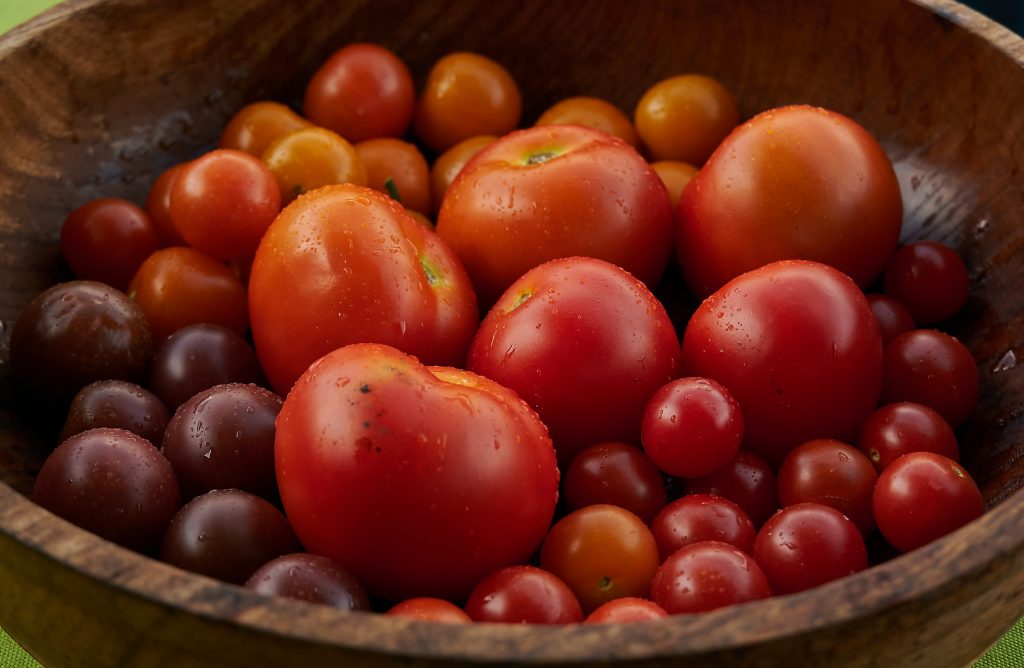
Photo: Heritage tomato varieties by Vitor Crispim (Regeneration Productions)
Once there is a fully developed system in the food gardens that can be replicated for local regenerative food production, Kay and Bob will look to incorporate the natural phosphate cycling system on their pastures and crop fields, with a little help from the introduction of many trees cycling nutrients in addition to more chickens, ducks, and pigs behind the cows, which forage beneath the trees for grubs and deposit additional manure. Using holistic management practices on their pasture, they practice longer stock rotation cycles than most other farmers allowing the pasture more time to regenerate between grazing – so they’re already halfway there.
This regenerative land use model is not the quick and easy fix that chemical fertiliser provides and there are additional labour costs. Yet in the long-term, regeneration of the land can eliminate costly inputs, animal feed expenses, and veterinary bills. It is a model that is transferable to larger market gardens and farms, providing economic, environmental, and social value for many families.
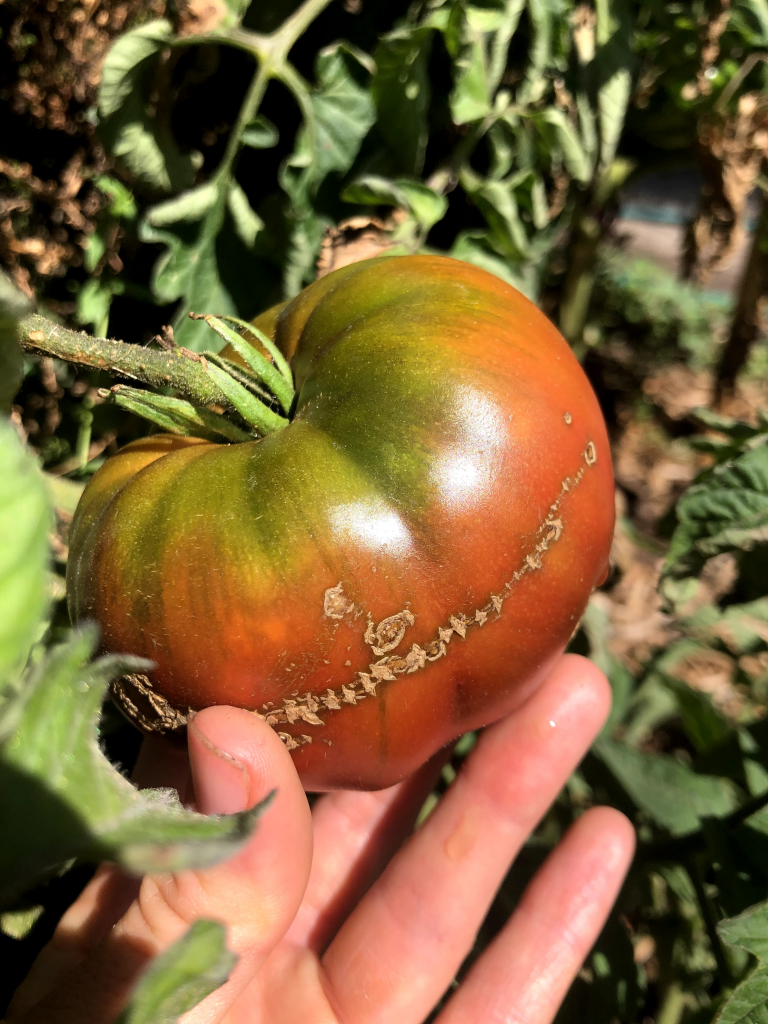
Photo: Heritage tomato varieties by Vitor Crispim (Regeneration Productions)
“There are farmers and commercial gardeners in NZ already on their way
to become more regenerative. They’ve got the planning, systems
and technology in place. It wouldn’t take much to start
integrating systems for accessing natural sources of phosphate.”
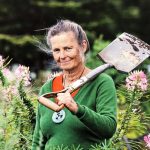
This story is part of a series called “Our Regenerative Future” produced in collaboration with Edmund Hillary Fellowship which investigates the current state of regenerative agriculture in New Zealand, and highlights future opportunities for the country’s primary production sector.
Back To Our Regenerative Future
Alina Siegfried




Leave a comment